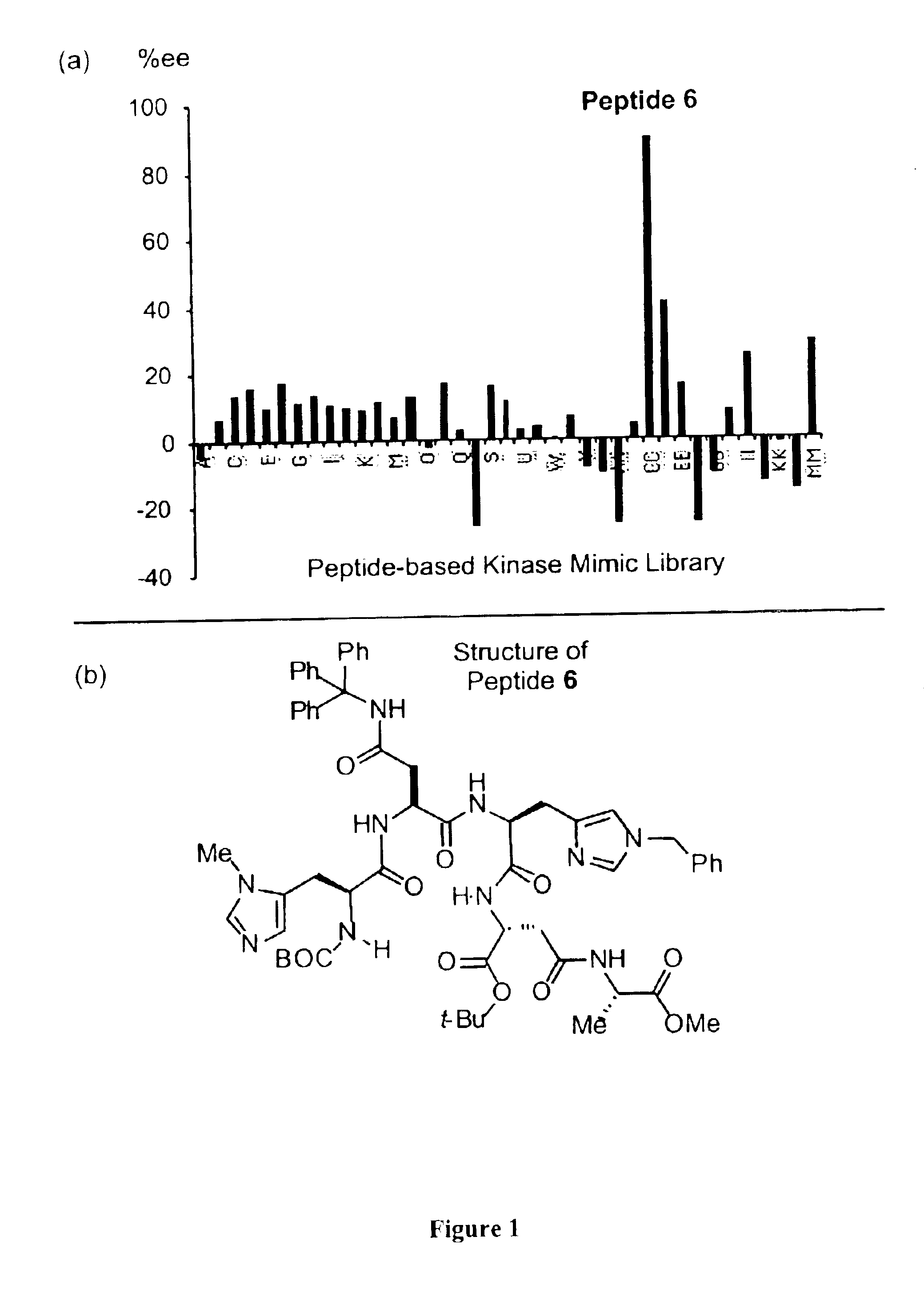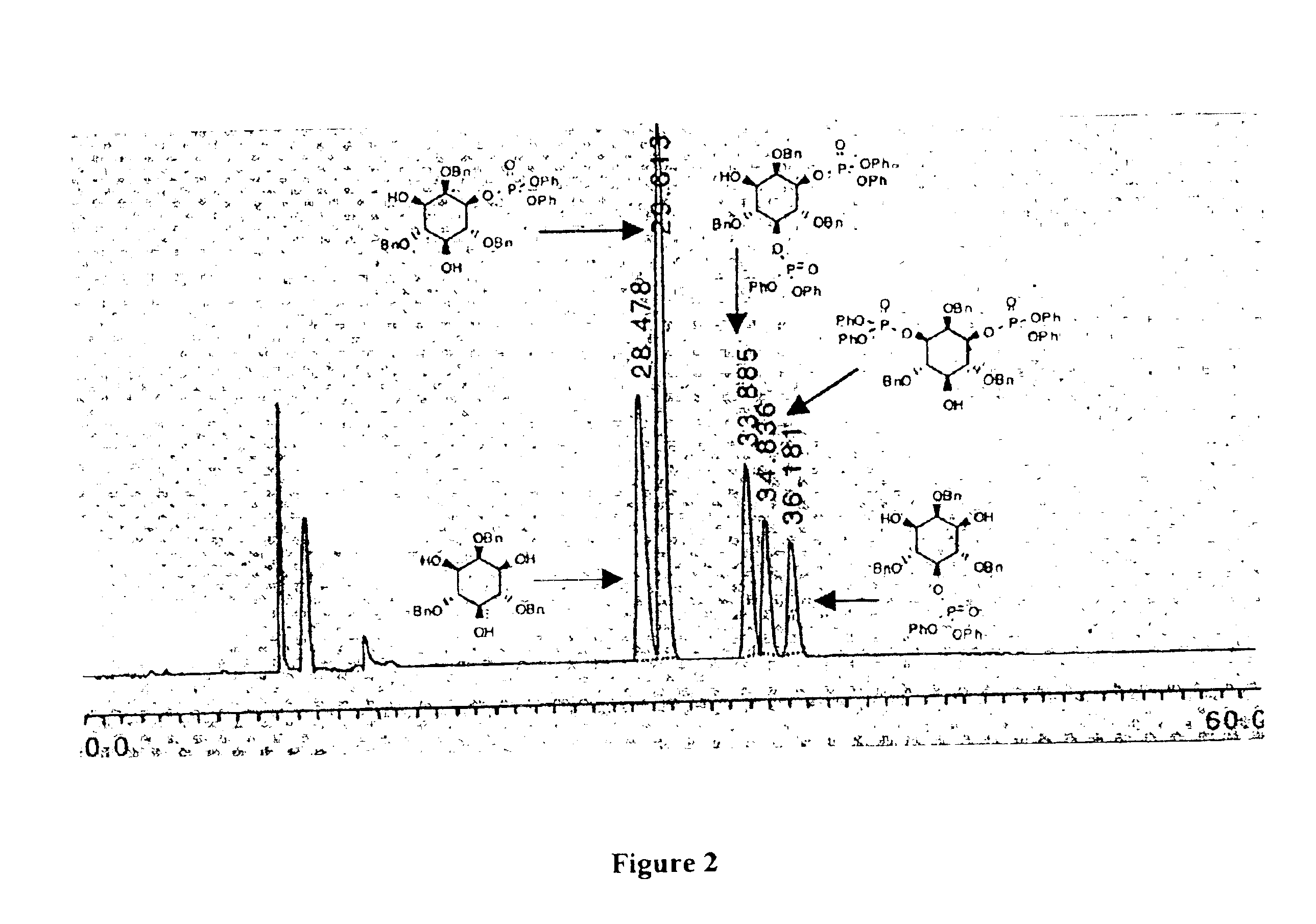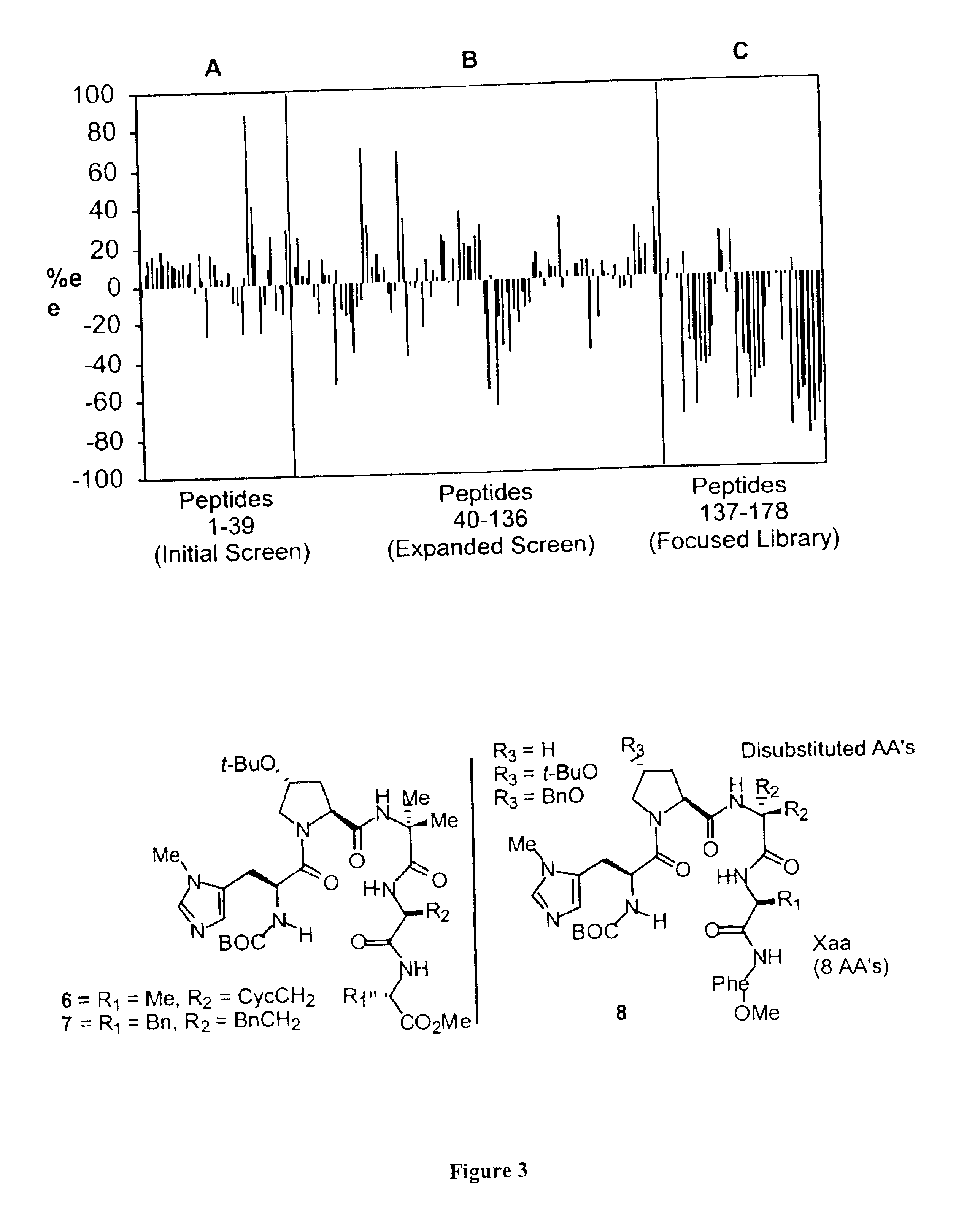Kinase mimic catalysts for asymmetric synthesis of phosphorylated inositols and cycloalkanols
a technology of kinase mimic and phosphorylated inositol, which is applied in the field of catalyst materials, can solve the problems of low yield of isolable material from natural sources, laborious isolation process, and limited studies pertaining to medicinal applications of inositol phosphates, and achieve high yield and high enantiomeric purity
- Summary
- Abstract
- Description
- Claims
- Application Information
AI Technical Summary
Benefits of technology
Problems solved by technology
Method used
Image
Examples
example 1
Phosphorylation of Secondary Alcohols (Model Reactions)
[0047]The phosphorylation of alcohols in Table 1 was carried out in the following manner: Cyclopentanol (0.060 mL, 0.66 mmol) was dissolved in 25 mL of toluene and an aliquot of N-methyl imidazole in CH2Cl2 (50 μL, 0.017 mmol, 2.5 mol %) was delivered. Triethylamine (0.185 mL, 1.33 mmol) was added followed by diphenyl chlorophosphate (0.275 mL, 1.33 mmol). After 12 h the reaction was quenched with 2 mL of methanol and concentrated under reduced pressure. The compound was purified by silica gel flash chromatography, eluting with a gradient of hexanes to 15% ethyl acetate / hexanes, to yield 0.158 g (75% yield) of alcohol Diphenyl cyclopentane phosphate as a viscous liquid.
Diphenyl Cyclopentane Phosphate
[0048]1H NMR (CDCl3, 400 MHz) δ 7.35-7.31 (m, 5H), 7.23-7.16 (m, 5H), 5.14 (m, 1H), 1.94-1.69 (m, 6H), 1.65-1.54 (m, 2H);[0049]13C NMR (CDCl3100 MHz) δ 150.4 (d, J=7.6 Hz), 129.5, 124.9, 119.9 (d, J=4.6 Hz), 83.3 d, J=6.9 Hz), 33.9 (...
example 2
PBPC Peptide Synthesis
[0070]Peptides were synthesized on solid support using commercially available Wang polystyrene resin preloaded with the appropriate amino acid. Couplings were performed using 4 equiv amino acid derivative, 4 equiv. HBTU, and 3 equiv Hunig's base in DMF, for 3 h. Deprotections were performed using 20% piperidine in DMF for 20 mm (to minimize diketopiperazine formation, dipeptides were deprotected using 50% piperidine in DMF for 5 min). Peptides were cleaved from solid support using a mixture of MeOH:DMF:NEt3 (9:1:1) for 4 d. The peptides were characterized by electrospray mass spectrometry and used in parallel reaction screens without further purification. Peptide 6 which proved selective for the desymmeterization of triol (3) was purified by reverse phase HPLC techniques. Preparative HPLC was performed using a reverse phase RP-18 X Terra (Waters) column, eluting with 57-73% methanol in water, at a flow rate of 4.15 mL / min. The purity was checked by analytical H...
example 3
Phosphorylation of Triol 3.
Standard Conditions for Phosphorylation Employing DMAP
[0076]Triol (3) (0.025 g, 0.057 mmol) was dissolved in 1.5 mL of CH2Cl2 and an aliquot of a DMAP solution in CH2Cl2 (50 μL, 0.0028 mmol, 5.0 mol %) was added. Triethylamine (9.0 ∥L, 0.065 mmol) was then introduced followed by diphenyl chlorophosphate (0.012 mL, 0.058 mmol). After 12 h the reaction was quenched with 0.5 mL of methanol and concentrated under reduced pressure. The starting material, the 1- and 5-mono phosphate products and the 1,3- and 1,5-diphosphate products were separated by preparative HPLC employing a normal phase YMC-Pack PVA-Sil NP column, eluting with a gradient of 0-6.5% 2-propanol / hexanes over 40 min, at a flow rate of 10 mL / min (see diagram 1 for HPLC trace). The five compounds were identified and characterized by 1H NMR, 31P NMR and Mass Spectrometry.
PUM
| Property | Measurement | Unit |
|---|---|---|
| chemical shifts | aaaaa | aaaaa |
| thickness | aaaaa | aaaaa |
| path length | aaaaa | aaaaa |
Abstract
Description
Claims
Application Information
 Login to View More
Login to View More - R&D
- Intellectual Property
- Life Sciences
- Materials
- Tech Scout
- Unparalleled Data Quality
- Higher Quality Content
- 60% Fewer Hallucinations
Browse by: Latest US Patents, China's latest patents, Technical Efficacy Thesaurus, Application Domain, Technology Topic, Popular Technical Reports.
© 2025 PatSnap. All rights reserved.Legal|Privacy policy|Modern Slavery Act Transparency Statement|Sitemap|About US| Contact US: help@patsnap.com



